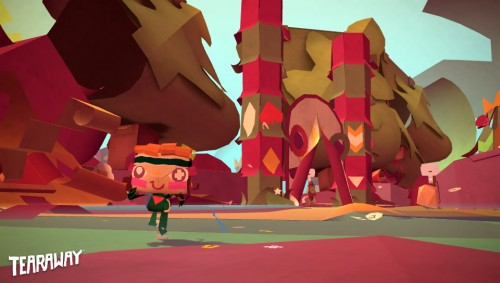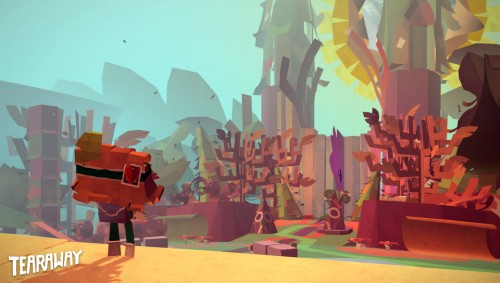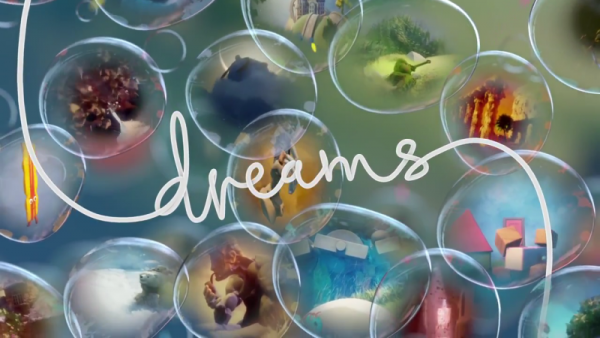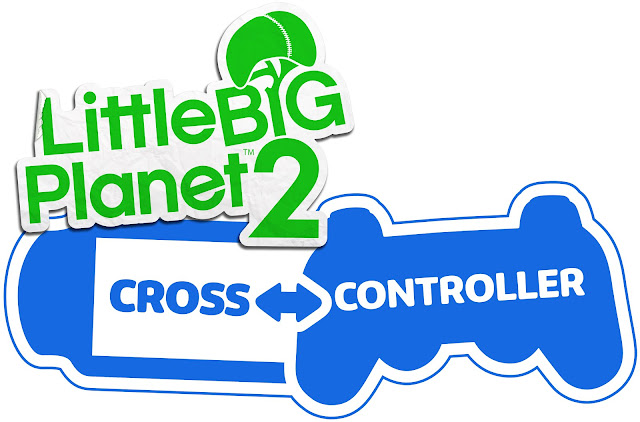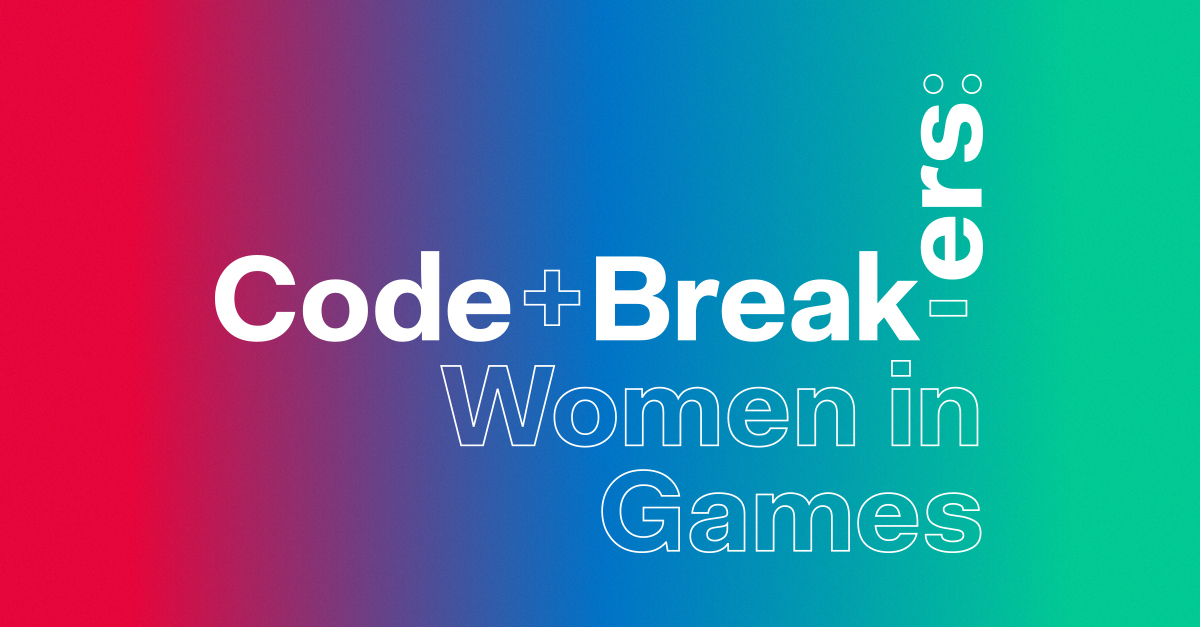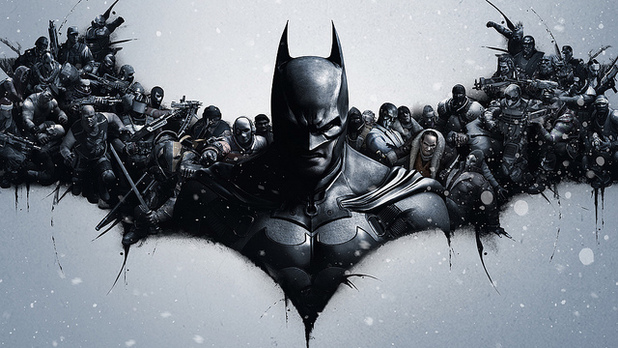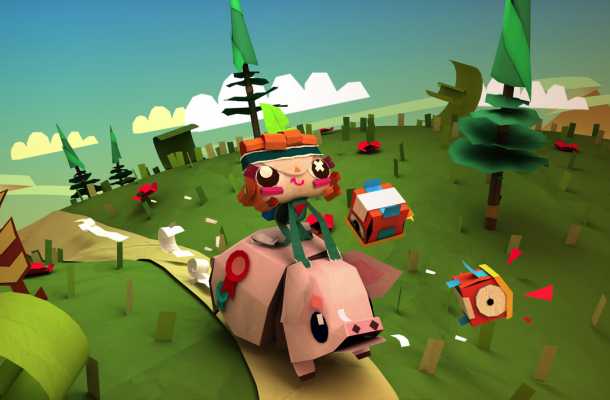
Whimsy is a tricky quality to achieve for any creator. Go too far, and the charming can become grating, or unbearably twee. It’s fair to say, however, that LittleBigPlanet developer Media Molecule has whittled whimsy down to a science. In Sackboy, Media Molecule arguably defined the PS3, gracing it with a loveable mascot to call its own; now on the PS Vita, the British developer looks like it may have forged a new identity for the struggling handheld with Tearaway, its upcoming platformer-cum-puzzler. We recently had the opportunity to play through the first couple of hours of the game, and came away utterly charmed, and convinced of the PS Vita’s limitless potential for creativity in the hands of the right developers.
Ostensibly, Tearaway looks and plays like a platformer grafted from the mould of Super Mario 64 and its genre descendants, as players guide a little messenger man, Iota, or his female counterpart, Atoi, around a papercraft world, wherein everything from animals, rivers and trees appear to have been folded and cut from origami paper. Tasked with delivering a message to a looming being in the sky (actually the player, whose face is captured by the PS Vita’s front-facing camera and plastered in real-time in the centre of a paper sun!), Iota sets about the 3D environment, solving simple puzzles, engaging in light combat, and traversing the world.
Our first and overwhelming impression is that Media Molecule has crafted a gorgeous game, moreso for its utterly cohesive and convincing artistic direction than any particular technical whizzbangery (although the game is no slouch, appearing crisp and running flawlessly even in its unfinished state). The developer appears to have utterly committed to its conceit of a paper world; when Iota steps into a paper stream, tiny paper ripples spread underfoot, and you can even make out the fold-lines in the origami crows circling overhead. The world is colourful, clever, and tangible, and unlike anything we’ve ever seen before in a game. However, the scope of Tearaway‘s charm extends beyond its aesthetics, and it soon becomes clear how devoted Media Molecule is to its central vision. Being that the world of Tearaway is constructed of paper, Media Molecule constantly invites you to touch it and (dare we say it) craft it, effectively shattering the fourth-wall as players are asked to use the PS Vita’s touchscreen to customise Iota’s appearance. Want to cut out a little hat, or a new set of mittens? You can. Want to give Iota a mustache cut from blue craft paper? Go for it. From time to time, the denizens of the game will ask the player to design aspects of the world and flex their creative muscles. From crafting a paper crown for a squirrel king, to using the PS Vita’s camera to take a photo for a cow’s new ‘skin’ (we chose to infringe copyright by taking a photo of our television, on which Game of Thrones was playing at the time, and plastering the image on the poor bovine’s side), Tearaway is constantly demanding that the player express himself and impose himself upon the environment. At one point, the player is asked to design and cut out a snowflake, at which point the player’s creation immediately begins to rain down from the sky. It’s an empowering, beguiling moment, hardly impacting on the gameplay but drawing us deeper into the game’s world, enveloping us in its whimsical charm.
More impactful, and no less charming, are the game’s simple puzzles, which often require that players ‘insert’ themselves into the game world. For example, certain combat sequences and puzzles allow the player to push their finger up through the paper and into the world by utilising the PS Vita’s rear touchscreen. While it is initially disconcerting to see a photo-realistic index finger protruding into the papercraft world, the effect is ultimately quite effective, forging the illusion that the player exists outside the little papercraft world stored on the system and has the power to impact upon it. Other ways in which the player can impact the world include dragging platforms, and tapping on the rear touchscreen like a drum to propel Iota into the air, and over the course of playing through our preview build, we felt as if Tearaway was consistently able to offer up new tricks to maintain interest. We hope that the full game can maintain the element of surprise and discovery over the course of its duration.
Based on our limited time with the game, we came away extremely impressed and beguiled by Tearaway‘s charms. The game is endearing, gorgeous, creatively invigorating, and possessed of a unique spirit all its own. It controls beautifully, runs well, and is a much-needed tonic for the PS Vita, whose retail full-priced releases have tended to consist of compromised ports of console franchises, whittled down to fit the system. Tearaway is different. It’s a breath of fresh air in more ways than one, and makes full use of all of the PS Vita’s features and strengths. If the finished game can maintain the charm, fun and creativity of its first couple of hours, and continue to offer up new surprises, then Tearaway will, without doubt, be one of the best PS Vita games available and shoe-in for the shortlist of the best portable games of this year. Our fingers and toes remain optimistically crossed.

